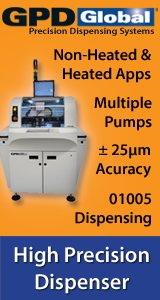Printed Circuit Board Assembly & PCB Design Forum
SMT electronics assembly manufacturing forum.
- SMTnet
- »
- Electronics Forum
- »
- screen thickness
screen thickness
Views: 8336
![]() Is there a different thickness of screens we should be usi...
- Jan 23, 2012
by
gaz
Is there a different thickness of screens we should be usi...
- Jan 23, 2012
by
gaz
![]()
![]()
![]() Area Ratio [PCB Assembly Guidelines for 0.4mm Package-On-Pac...
- Jan 23, 2012
by
davef
Area Ratio [PCB Assembly Guidelines for 0.4mm Package-On-Pac...
- Jan 23, 2012
by
davef
![]()
![]()
![]() If you failed math like I did. A 0.005 inch stencil would wo...
- Jan 24, 2012
by
KaHrpr
If you failed math like I did. A 0.005 inch stencil would wo...
- Jan 24, 2012
by
KaHrpr
![]()
![]()
![]() We are using 6 mil screens, and these boards have 0603,SOT23...
- Jan 25, 2012
by
gaz
We are using 6 mil screens, and these boards have 0603,SOT23...
- Jan 25, 2012
by
gaz
![]()
![]()
![]() Your uising 6 mil thick screen on 0603 and sot-23 and you
t...
- Jan 25, 2012
by
WRONGWAY
Your uising 6 mil thick screen on 0603 and sot-23 and you
t...
- Jan 25, 2012
by
WRONGWAY
![]()
![]()
![]() A few years ago a lot of stencils were 6 mill and 7 mills an...
- Jan 25, 2012
by
KaHrpr
A few years ago a lot of stencils were 6 mill and 7 mills an...
- Jan 25, 2012
by
KaHrpr
![]()
![]()
![]() We're in the high rel market and use a lot of 5 mil stencils...
- Jan 27, 2012
by
ScottE
We're in the high rel market and use a lot of 5 mil stencils...
- Jan 27, 2012
by
ScottE
![]()
![]()
![]() Thanks very much everyone.
I'll try out a 5mil and se...
- Feb 01, 2012
by
gaz
Thanks very much everyone.
I'll try out a 5mil and se...
- Feb 01, 2012
by
gaz
![]()
![]()
![]() > Thanks very much everyone.
>
> I'll try out a ...
- Feb 03, 2012
by
aci
> Thanks very much everyone.
>
> I'll try out a ...
- Feb 03, 2012
by
aci
![]()
![]()
![]() By changing paste and making a better profile, it seems like...
- Feb 06, 2012
by
gaz
By changing paste and making a better profile, it seems like...
- Feb 06, 2012
by
gaz
![]()
![]()
![]() What is the percent solids of the paste you are using?
...
- Feb 14, 2012
by
isd.jww
What is the percent solids of the paste you are using?
...
- Feb 14, 2012
by
isd.jww
![]()
![]()
![]() Is that the "general metal loading" spec?
We are usin...
- Feb 16, 2012
by
gaz
Is that the "general metal loading" spec?
We are usin...
- Feb 16, 2012
by
gaz
![]()
- SMTnet
- »
- Electronics Forum
- »
- screen thickness







